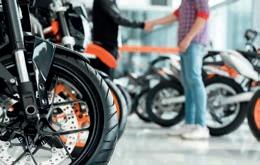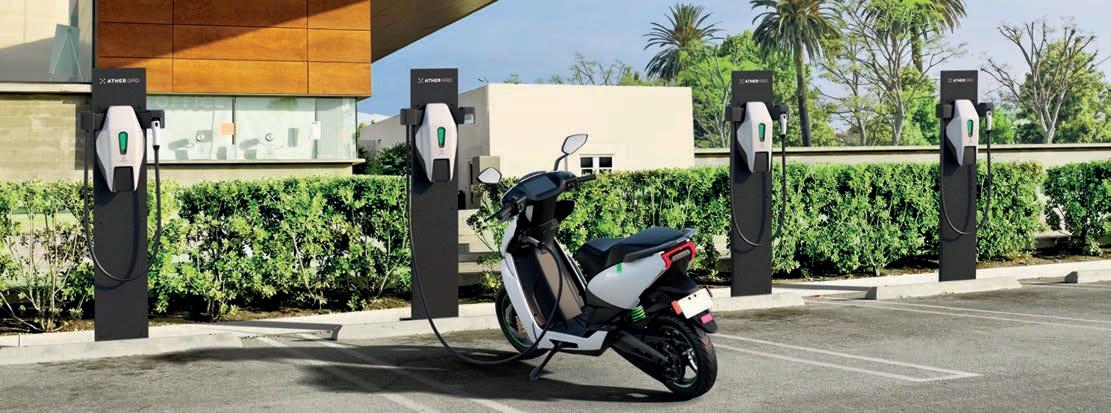
5 minute read
MARKET WATCH
Used bike data Market Watch
Trade & industry report with cap/hpi motorcycle editor Alan Elsworth
MARKET OVERVIEW
OVER THE LAST DECADE, OR EVEN a bit longer, the exporting of stock into the Eurozone has caused domestic stock availability to become increasingly complex, which in turn has, of course, been the cause of the significant increases in prices, particularly in more recent years.
What perhaps has been less obvious is the differential between the seasons. The trade buys just before retail demand so in the past this has seen prices start to rise just after the Christmas break and reduce at varying points before autumn, dependent, usually, on the weather and a month or so before retail buyers hang their riding gear up for the winter. Thus it made sense not to carry too much stock through the winter when the trade went quiet. As stock became more challenging to find, dealers with suitable cash flow started to buy earlier. The consequence of this is that the old peaks and troughs of pricing between seasons has stabilised over the years to the point where it is barely discernible.
With the rise in demand for smaller capacity machinery over the last couple of years, thanks to its popularity for commuting and deliveries, it was only a matter of time before demand would slow. Perhaps the current slowdown is not due to lack of demand but a lack of supply, or even a mix of both, but suddenly the monthly registration numbers of the sub-125cc bands are starting to reduce. Despite this, yearto-date numbers are still showing the highest market share, with over 40% of the year’s registrations coming from the two smallestcapacity bands.
If the above is causing some mild confusion as to where the industry currently is, a more realistic way to compare this year’s performance is by looking back at pre-Covid numbers. As has been much discussed over the last two years, the rise in the popularity of small capacity bikes and scooters, particularly the moped sector, is very evident, but is it sustainable? The main concern as we compare the two is that if the aforementioned learner-legal sector was not as robust as it has been, would the numbers for PTW registrations be in a negative position? And don’t forget that larger capacity machines are more often the big ticket/higher margin types.
For the second month in a row registration figures released by the MCIA reduced, resulting in a 15.7% drop in June compared to the same month in 2021. Although it does not look that encouraging, it is worth remembering that buying patterns over the last few years have been out of kilter to the norm. At the halfway point in the year, the overall numbers are still in a positive position, 10.1% up compared to 2021. AUCTION OVERVIEW
THE AUCTION HOUSES HAVEN’T SEEN much in the way of change over the latest research period. The number of machines going under the hammer at auction is reducing as dealers are hanging on to sellable stock because of the muchmentioned shortness in availability of both new and decent used stock.
The percentage of bikes sold remains strong as demand remains high, but entries low. This is exacerbated by the lack of returns at the end of PCP agreements being auctioned, in favour of machines being retained within the dealer network or being sold privately, leading to colourful negotiations between dealer and consumer as realistic trade bids can be difficult to stomach when compared to retail prices.
MOTORCYCLE FUTURES
The quest for zero-emission travel is becoming an even bigger talking point around the motorcycle industry as there is talk that the UK government’s 2035 deadline is too close. Recently the National Motorcyclists Council (NMC) has voiced opposition. The NMC said: “The government is making a mistake by trying to force the pace of motorcycle decarbonisation and must not ignore the voice of motorcyclists as proposals are developed. Motorcycle manufacture is a global, not local, matter. As a result, the UK should only move on globally agreed net-zero timetables and not seek to force this via a UK-only set of arbitrary targets – which will make little difference to the global CO2 picture.”
Additionally, the NMC suggests that the government’s decisions and goals are happening too soon for manufacturers. Electric motorcycles have not yet become popular with bikers and still make up just a tiny percentage of the market share. The NMC statement continued: “By forcing the pace of change in just one market, the government instead risks potential market withdrawal by manufacturers, with a subsequent reduction of choice for riders and economic damage to the motorcycle sector.”
The MCIA has also made its objection public and has requested the government rethinks its decision to end sales of new nonzero emission motorcycles by 2035.
At the end of May the European Parliament voted to confirm its decision to end the sales of new carbon-emitting combustion vehicles by 2035. The confirmation was required due to an attempt by some countries to push forward an amendment to the legislation that would delay the end of combustion sales to 2040. That amendment has been rejected by European lawmakers, who instead are pushing on with the 2035 end date. There have also been countries, such as Germany, who have asked for exceptions to be granted for internal combustion engines that run on synthetic fuels, partly due to the lack of infrastructure in place for electric vehicles. Internal combustion engines that run on synthetic – not fossil – fuels would also be zero-emission, and they could also be used in older, modified vehicles.
The concern the domestic groups have for the industry’s readiness with respect to the deadline is laudable, and there is a genuine concern that models or infrastructure will not be ready. Initially, comments were made that the UK was going to be first, but it looks likely the EU will now be implementing a similar timeline.











